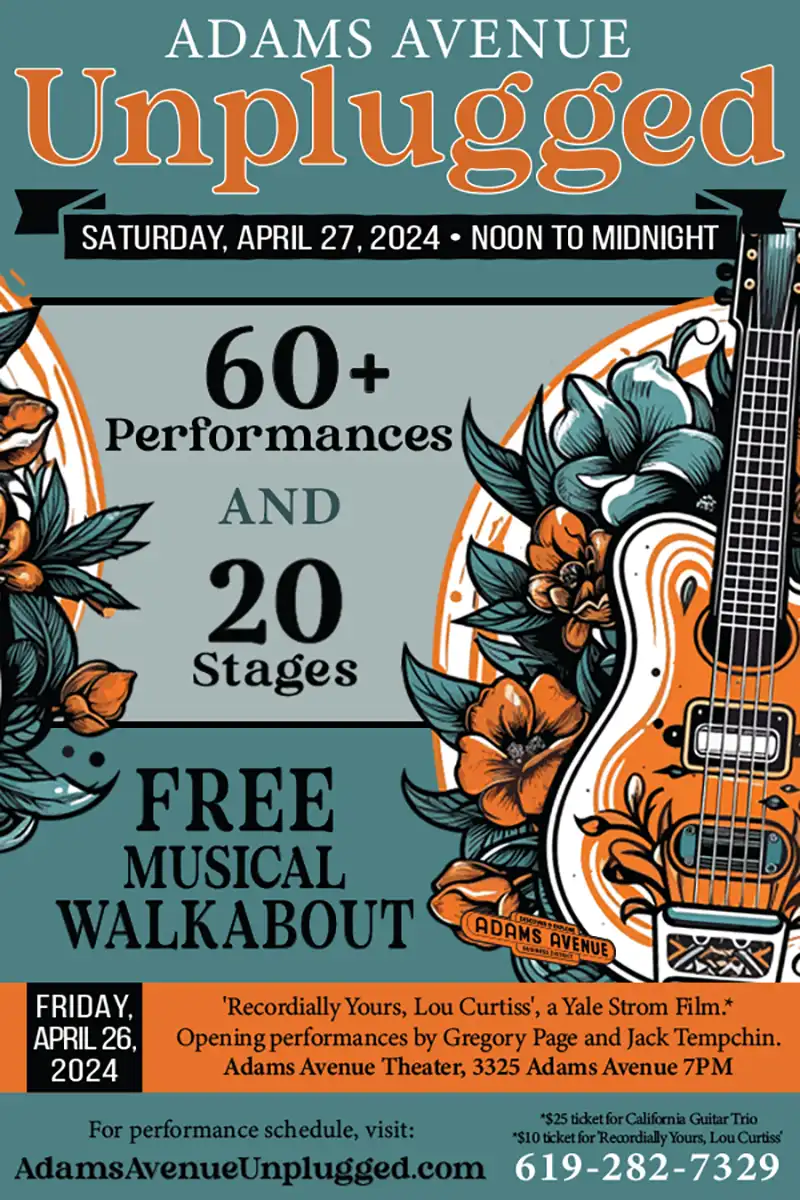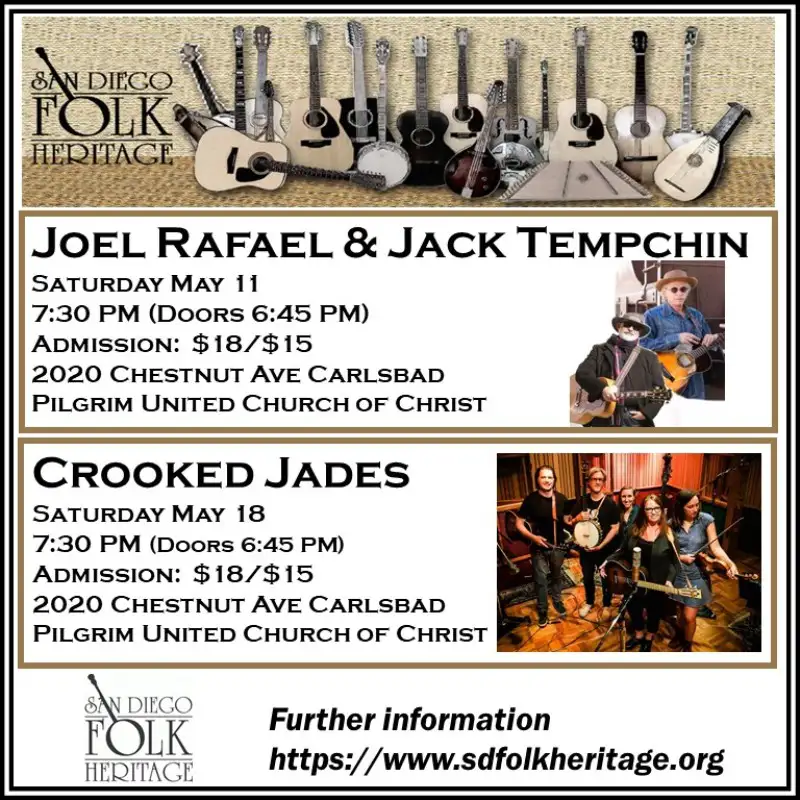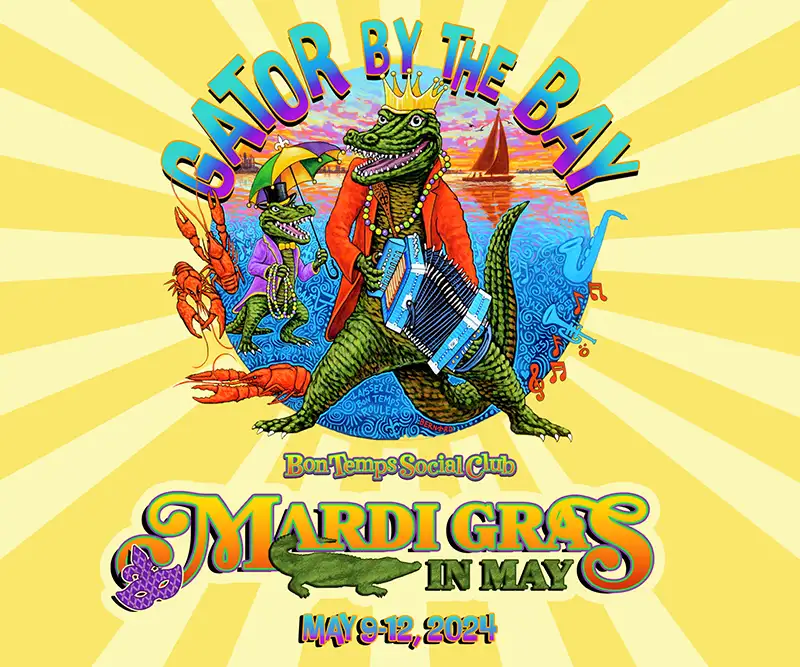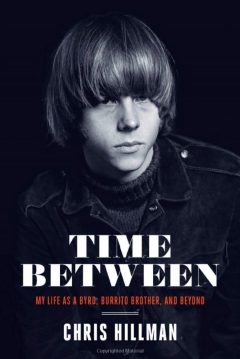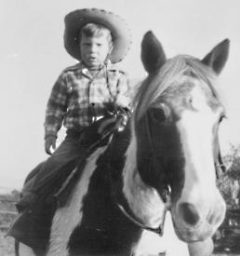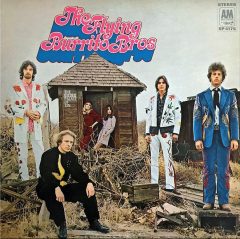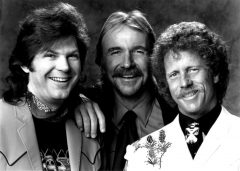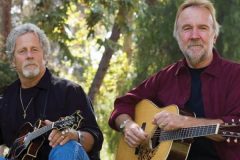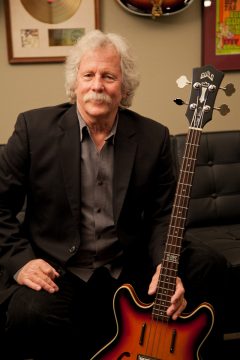Yesterday And Today
Time Between: Chris Hillman’s Life in Music Leads to his Roots
“I heard the most beautiful voices I had ever heard.”
This is how country-rock California bluegrass pioneer Chris Hillman describes the first time he heard Jim McGuinn, Gene Clark, and David Crosby sing together as the Byrds.
As a founding member of the band that helped shaped the music of the pivotal decade—the 1960s—Hillman’s autobiography, Time Between: My Life as a Byrd, Burrito Brother, and Beyond, is a much-anticipated release for those interested in the history of the times when musical innovations and changing directions were a daily occurrence.
Time Between begins in 2017 with the torrential Thomas Fire that destroyed much of Ventura and Santa Barbara wilderness. Fortunately, his home, which he shares with his wife, music executive Connie Pappas Hillman, was spared. But in a dramatically poetic way, his story opens with the kind of metaphor Hillman has scattered into some of his most well-loved songs like “Sin City,” written with Gram Parsons. “But a gold-plated door on the 31st floor won’t keep out the Lord’s burning rain.” He speaks today of surviving many “metaphorical” fires.
I’ve been confronted by personal struggles and I’ve lost people I loved deeply. I’ve overcome the ravages of disease. I lost an earthly father too young and found a heavenly father I only wish I had found sooner. I’ve experienced the highs, lows, temptations, and triumphs of life as a professional musician.
His account of the fire immediately connects the reader to our present-day struggles where nothing is settled, life is changing, and the heavenly fire still rages.
The book offers a singular view with a universal message Hillman takes on the road to his legendary success. In the process we see one man’s commitment to make a positive difference to the world around him. His focus is not on the commercial success of his music, but on the discovery of his own values in the process of pursuing authentic American music and the community of love and excellence that grows around him.
Hillman makes his story clear through straightforward, honest, and unpretentious conversational narrative. He leads us through the ups and downs of life in the latter 20th century, not only as a popular musician, but as a human being. The elements include his phenomenal success in rock and country music, the family scars and how he found healing along the way through his own family and friends. In the end he reveals, in the words of journalist, Allen Saunders, “Life is what happens while you’re busy making other plans.”
In a larger sense Chris Hilman’s memoir is the story of how a generation survived and found their passions and priorities. While many figures from the ’60s counterculture compromised and lost themselves in self-destruction, Hillman’s story is one of real hope found through the support of his family, friends, and a hard-fought faith—he joined the Greek Orthodox branch of Christian spirituality. He doesn’t hold back on the hardships he encountered, and there were many, but there is a sense of genuine unsentimental resolve that life is a gift.
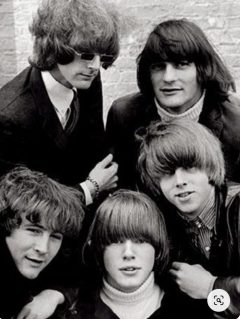
The Byrds, 1965 (clockwise from lower left: David Crosby, Roger McGuinn, Gene Clark, Chris Hillman, Michael Clarke).
From the beginning Hillman was an unwilling leader of the counterculture by way of the Byrds. The band became America’s answer to the Beatles while they forged a new sound and new genre. The electrified folk music and psychedelic leanings of the legendary band was on the far side of the mountain from where Hillman felt most at home. Country music was his natural home. In the beginning, he was the quiet Byrd, whose few years of musical experience included playing guitar and mandolin in regional Southern California bluegrass bands, most notably the Scottsville Squirrel Barkers, based in San Diego.
He was raised in the unique community known as Rancho Santa Fe, California, in San Diego County near the wilderness, ranches and the romanticism of the cowboy culture. In the first few chapters he effectively creates the tension that lies between an idyllic childhood hometown and the struggles and hardships he endured. His memories of his Mexican-styled hometown, where he lived out his childhood is detailed, clear, and colorful.
Ultimately, Time Between is a portrait of loss, redemption, and renewal. While it helps to be familiar with his music, his casual, immediate narrative style may encourage the reader to a closer listen to the music he’s honed and polished over the years. One of the main story strands that runs through Hillman’s book is his roots in the country music that grew from his hometown near wilderness, ranches, and the romanticism of cowboy culture. What is ultimately redeemed and restored are the core values of real country music, family, friends, and faith.
As Hillman says, “My greatest honor is being a husband to Connie; a father to Catherine and Nick; a father-in-law to their spouses, Nick and Annie; and “Papa” to my granddaughter and grandson. I’ve lived a very full life, and God has blessed me abundantly.”
At times, Hillman’s childhood reads like unpublished Steinbeck stories. Rancho Santa Fe is located 20 miles north of San Diego, nestled on the edge of green rolling foothills and stone’s throw from the Pacific Ocean. The idyllic part of Hillman’s childhood is described as the colorful characters who emerged from the small town. His father was friends with actor Victor Mature, and there were local cowboys and celebrities who settled there to get away from the Hollywood scene.
Most notable was John Robertson, a silent film actor and director. He wore a Stetson hat with a handlebar mustache. He opened a local riding club that became a catalyst for Hillman’s lifelong love for horses. Although John Robertson is not a household name, Hillman and McGuinn wrote a song, “Old John Robertson,” for the Notorious Byrd Brothers album. It has been re-recorded on his latest album, 2017’s Bidin’ My Time as “New Old John Robertson.” Much of Chris Hillman’s style in adulthood has been influenced by the aging actor who seemed to embody what he loved best about the West. Hillman describes his admiration for the man: “He was a wonderful man who knew everyone by name and was so very kind to all of us kids. I always loved running into him.”
When Hillman began playing mandolin and guitar, his life’s trajectory was altered. But he didn’t know that he was a pioneer in what would become a vital and influential music scene in San Diego County. His time with the Scottsville Squirrel Barkers included local San Diegans Ed Douglas, Larry Murray, Gary Carr, Kenny Wertz, and would also include Bernie Leadon of the Flying Burrito Brothers and the Eagles.
The soul of Hillman’s story occurs when his family began experiencing financial hardships. As Hillman describes it, he learned to surf at nearby Solana Beach. Along with learning to play music with roots in the deep South, he has always lived in California near the sea. When asked if he can reconcile the dissonance between country music and surfing, he laughed and said, “Real surfers don’t play surf music! Real surfers play bluegrass!”
It was when he was at the beach that he learned of his father’s death. At 16, it was devastating. To make matters worse, his father had been experiencing major depression and committed suicide. According to his story, this resulted in unresolved grief that showed up at various times as anger and was often acted out in ways that were hurtful to others. This included breaking off performing with Roger McGuinn for a time.
After a few years playing bluegrass with the Squirrel Barkers and the Golden State Boys with the Gosdin brothers’ future country star Vern and his brother Rex, Hillman was offered a place in the Byrds. As a folk-based band, with former members of the Chad Mitchell Trio and the New Christy Minstrels, they aspired to becoming as successful as the Beatles. Hillman found himself learning bass guitar and getting to know musicians very different from his friendly bluegrass bandmates.
Even though the stories for many fans are familiar, in the context of spending years with the Byrds’ as young man in his early 20s while unresolved about his father’s tragic death and carrying a passionate drive for the music he was called upon to create, gives Hillman’s story the pathos and vulnerability often lacking in rock autobiographies.
Based on his story, his time with the Byrds enlarged his musical vision and community. But it also gave him the opportunity to bring his brand of country music to a new audience. The now classic Sweetheart of the Rodeo allowed him to fuse the feeling of the rock music he’d been playing with his more traditional country background. His influence on this album was his strongest presence on any Byrds album. It runs parallel to Dylan’s release of the stripped-down country-leaning album John Wesley Harding and the decidedly non-psychedelic Music from Big Pink by the Band. Sweetheart of the Rodeo belongs in this company and Hillman deserves a good deal of credit for its critical and historical success. Today, through Sweetheart of the Rodeo, we are reminded of how he helped to bring on the dawn of the country-rock genre that eventually would influence modern country music.
Hillman’s portrait of Gram Parsons, his songwriting partner and co-founder of the Flying Burrito Brothers, is full blooded with his talent and his flaws in place. In his own view, Hillman describes how Parsons was a gifted artist who influenced others to consider country music as a part of rock ‘n’ roll. While they remained friends even through professional conflicts, Hillman’s account portrays Parsons’ lack of discipline and drug abuse as their main parting of ways. Hillman fired Parsons from the band after one-too-many no-shows and sloppy live performances. Hillman continued to nurture the Flying Burrito Brothers with future Firefall co-founder Rick Roberts and his old friend Bernie Leadon. Eventually, he left to join Stephen Stills’ supergroup, Manassas.
The remainder of Hillman’s book provides accounts of his solo work, his collaborations with McGuinn and Gene Clark and most significantly with country-rock, bluegrass artist Herb Pedersen. Hillman and Pedersen’s decades-long friendship contributed to a second wave of modern country music when they formed the nucleus of one of the finest country-rock groups in music history, the Desert Rose Band. According to Hillman the band fell into place with members who were as professionally disciplined as they were creative and passionate about country music. With John Jorgensen on lead guitar, Jay Dee Maness on pedal steel, Bill Bryson on bass, and Steve Duncan on drums, Hillman and Pedersen had the ideal group of musicians. From 1987 until 1991, with the help of Hillman’s songwriting collaborator Steve Hill and carefully selected cover songs, the Desert Rose Band charted 12 Top 40 hits on the national country charts. The band has influenced modern country artists like Brad Paisley.
In turn, after the Desert Rose Band peaked and eventually disbanded, Hillman went deeper into his country and bluegrass roots. It seems on stage the mandolin never leaves his hands. These years also find him seeking and finding deeper meaning in his life with his family and in his personal faith. Through Desert Rose and his projects afterward like Bakersfield Bound with Herb Pedersen, in the end, Chris Hillman’s story has not come to an end, as he makes clear throughout the book. He has wrestled with the lifetime of pain brought on by parental suicide but tempered through a childhood nurtured in the idyllic wilderness paradise. He traveled through the often crazy and stormy times of 1960s rock ‘n’ roll success followed by lean times. However, he is set apart from his Byrd bandmates in that two decades after the peak of the legendary band, he found new musical life and success with the Desert Rose Band.
But the most important thing to underscore in his story is how he kept returning to the core values of his childhood, which was musically embodied in his love for country music. As a member of the Bryds he flew high, but as his book tells it and as he continues to testify, it is his faith in God and love for his family, friends and fans that will continue to sustain him through the Time Between, the time beyond.


